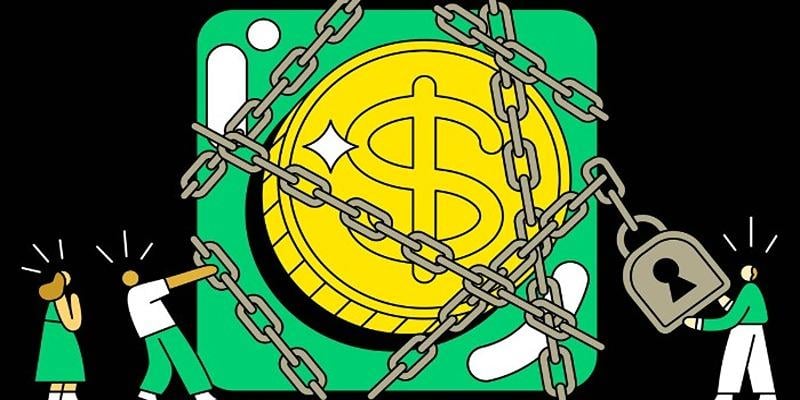Advertisement
Advertisement
The Impact of CHIP on Children's Access to Healthcare Services
Feb 15, 2025 By Rick Novak
The Children's Health Insurance Program, commonly known as CHIP, is a significant U.S. government effort that provides quality healthcare coverage to kids from low-income families. Since its launch in 1997, CHIP has become a beacon of hope, ensuring the health and growth of millions of young Americans. It's especially crucial for families who don't quite fit the Medicaid criteria but still need help getting insurance for their children. We'll dive deep into the origins of CHIP, its eligibility rules, the benefits it offers, and the impressive role it has played in making healthcare more accessible to children in the U.S.
History and Development of CHIP

The Children's Health Insurance Program (CHIP), established in 1997, has undergone significant evolution and expansion over the years through key legislative acts like the Balanced Budget Act of 1997 and the ( CHIPRA) in 2009. It has continually adapted to the needs of low-income children, extending coverage to pregnant women in select states and integrating with Medicaid in many others. Additionally, CHIP has embraced digital technologies and telehealth to enhance accessibility and the quality of healthcare services for its beneficiaries, ensuring a comprehensive approach to affordable healthcare coverage for vulnerable populations.
Eligibility and Enrollment
Income Criteria
CHIP eligibility is primarily determined by income criteria, with families earning too much to qualify for Medicaid but not enough to afford private insurance being eligible. Each state sets its income thresholds for CHIP, and they vary based on family size and income level.
Application Process
Families can apply for CHIP through their state Medicaid and CHIP agency. The application process typically involves submitting income and household information, and it may be done online, by phone, or in person. States use this information to determine eligibility and enroll eligible children and pregnant women.
Outreach and Enrollment Strategies
To increase enrollment in CHIP, states employ various outreach strategies, including community events, partnerships with schools and healthcare providers, and targeted advertising campaigns. Additionally, many states have streamlined the enrollment process to make it more accessible and efficient for families seeking coverage for their children.
Benefits and Coverage

Types of Services Covered
CHIP typically covers a wide range of essential healthcare services for children, including doctor visits, hospital care, immunizations, prescription drugs, dental and vision care, and preventive services. The specific services covered may vary from state to state..
Cost-sharing and Premiums
CHIP may require families to share in the cost of coverage through premiums, copayments, or deductibles. However, these cost-sharing amounts are generally affordable for low-income families. Some states may have no premiums, while others may charge nominal amounts based on income.
Benefits for Children with Special Healthcare Needs
CHIP often includes provisions to ensure that children with special healthcare needs receive the services and support they require. This may involve coverage for therapies, specialized medical equipment, and care coordination services to address the unique needs of these children. States work to provide comprehensive and appropriate care for all eligible children, including those with special healthcare needs.
Funding and Financing
CHIP functions as a cooperative endeavor between the federal and state governments, affording states the latitude to tailor program structures while benefiting from federal financial support. Its funding is predominantly derived from federal sources, distributed through block grants and matching funds, and supplemented by state contributions, frequently drawn from Medicaid allocations and enrollee premiums. Furthermore, Medicaid expansion, a component of the Affordable Care Act (ACA), has facilitated the harmonization and consolidation of coverage for low-income individuals, simplifying access and diminishing administrative intricacies by amalgamating CHIP and Medicaid initiatives in numerous states.
Program Administration
CHIP administration is a shared responsibility between states and the federal government. States have the authority to manage their programs, including eligibility, benefits, and enrollment, while the federal government provides oversight to ensure compliance with regulations. Quality control and performance measurement are integral to CHIP, allowing states to assess care quality and monitor program effectiveness.
Impact and Success of CHIP
CHIP, through affordable coverage options, has significantly reduced uninsured children in the United States, expanding access to essential healthcare services. This has led to improved health outcomes, including enhanced access to preventive care, timely treatment, and necessary medications, ultimately bolstering overall well-being. Moreover, the program's benefits extend beyond healthcare, alleviating financial burdens for families, reducing medical debt, and supporting parental employment, thereby fostering economic stability and positively influencing children's educational attainment and social development.
Challenges and Controversies
- Funding challenges: CHIP has faced funding uncertainties and budget challenges over the years, which can impact its ability to provide stable coverage to eligible children and pregnant women.
- Political Debates and Reauthorization: The program has been subject to political debates and reauthorization struggles, with the timing and amount of funding often becoming contentious issues among lawmakers.
- Access and Equity Issues: Despite its successes, CHIP has faced challenges in ensuring equitable access to care, particularly for marginalized communities and underserved populations, which can result in disparities in healthcare outcomes.
Future of CHIP
- Potential Reforms and Improvements: The future of CHIP may involve reforms and improvements to enhance its efficiency, streamline administration, and expand coverage to more children and pregnant women. This could include measures to simplify enrollment, increase coordination with Medicaid, and address evolving healthcare needs.
- Role in Expanding Coverage: CHIP will likely continue to play a crucial role in expanding healthcare coverage for low-income children and pregnant women, ensuring that they have access to essential medical services and preventive care.
- Integration with Other Healthcare Programs: Integration with other healthcare programs, such as Medicaid and potentially even private insurance options, could be explored to create a more comprehensive and cohesive system for providing healthcare coverage to vulnerable populations.
Conclusion
The Children's Health Insurance Program (CHIP) remains an indispensable lifeline for countless children and families in the United States, playing a pivotal role in ensuring access to crucial healthcare services. With its bipartisan support and comprehensive coverage, CHIP has substantially reduced the rate of uninsured children, contributing to improved health outcomes. It is imperative that we sustain and bolster this program, reaffirming our commitment to the well-being of our nation's youth and securing a healthier future for generations to come.
On this page
History and Development of CHIP Eligibility and Enrollment Income Criteria Application Process Outreach and Enrollment Strategies Benefits and Coverage Types of Services Covered Cost-sharing and Premiums Benefits for Children with Special Healthcare Needs Funding and Financing Program Administration Impact and Success of CHIP Challenges and Controversies Future of CHIP Conclusion
Stock Exchange Owners: A Closer Look at the Players

An Overview of the Vanguard Cash Reserves Federal Money Market Fund

10 Best Landlord Insurance Companies

Best Buy's Expanding Portfolio: Top 3 Subsidiary Companies

Selling Shares Before the Ex-Dividend Date: Maximizing Returns

Why 3x ETFs Are Riskier Than You Might Think

The Future Value and Present Value of an Annuity

How Chime Makes Money



